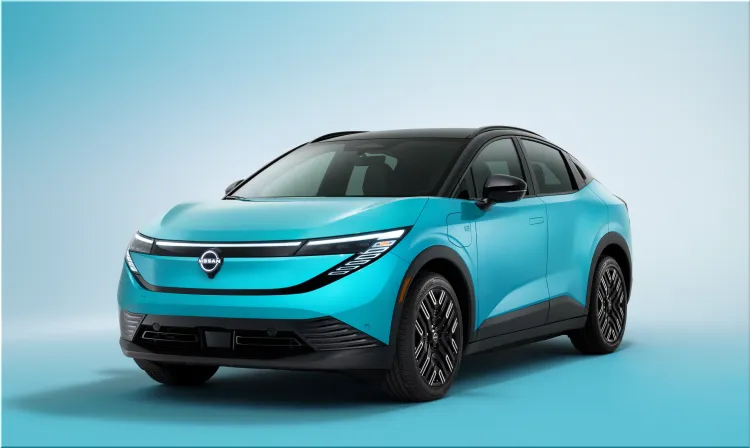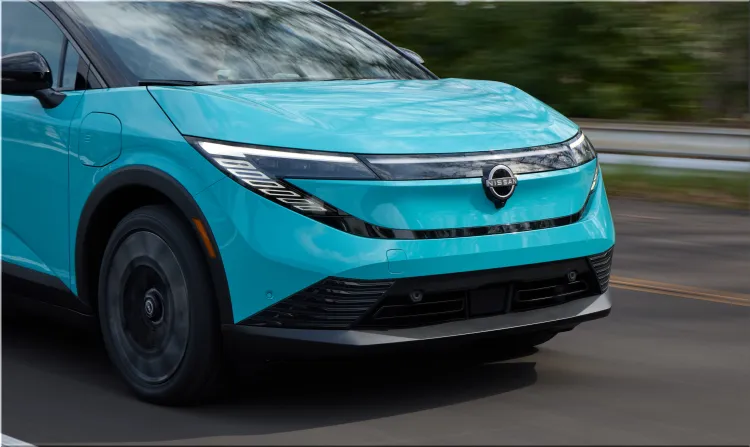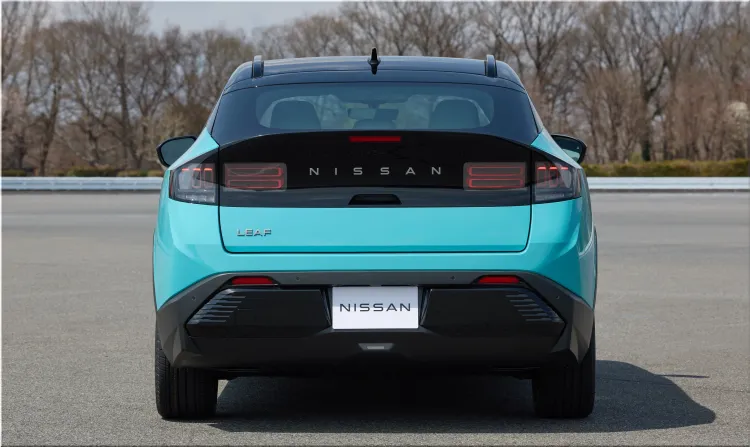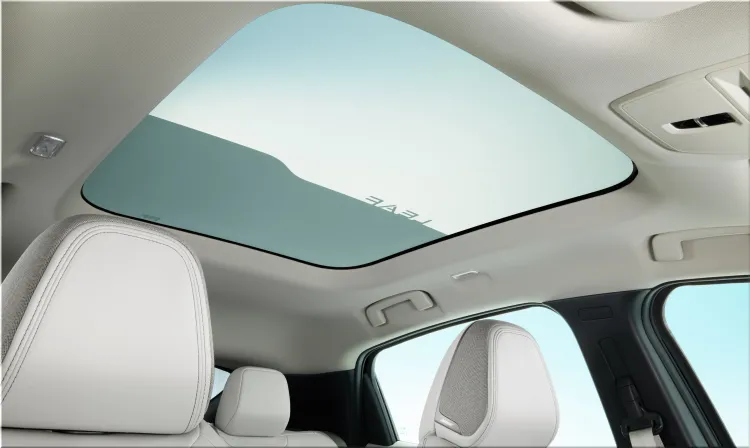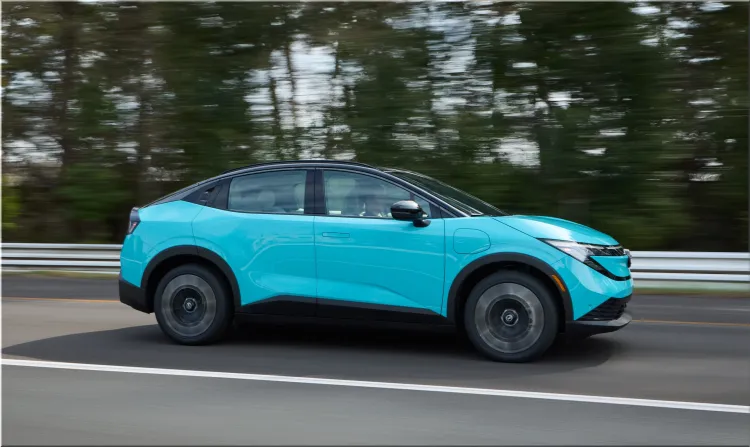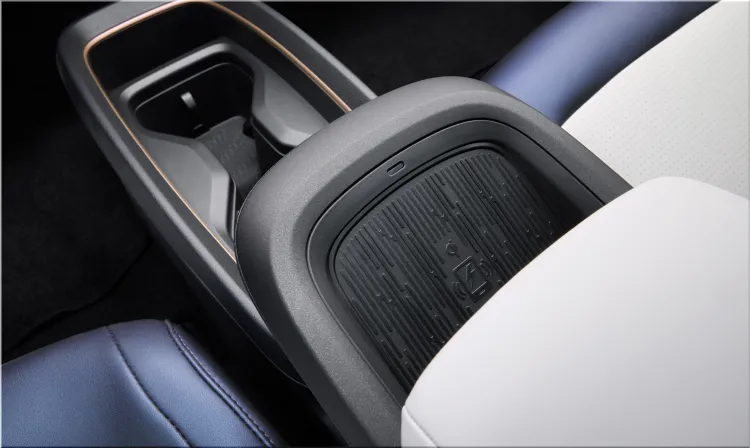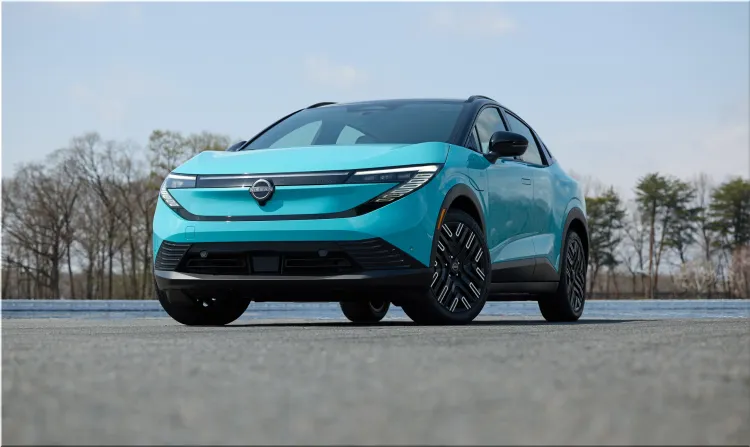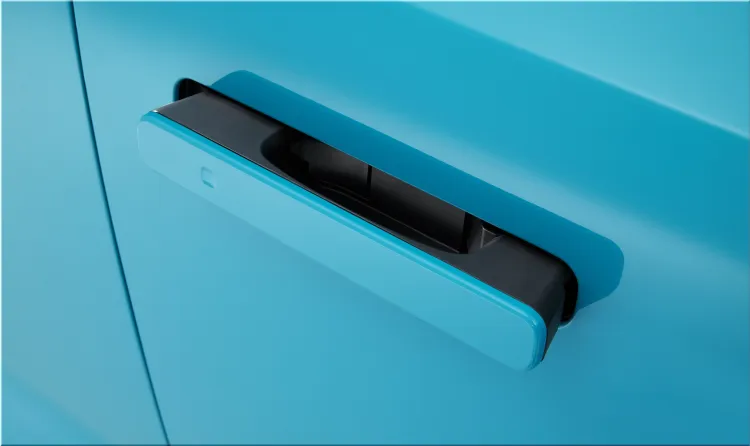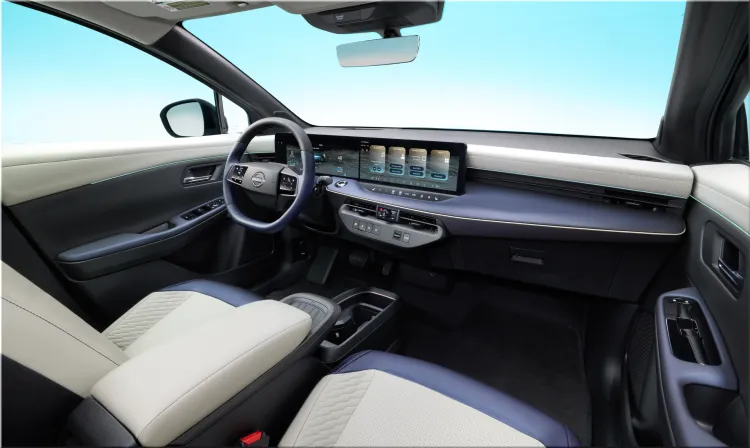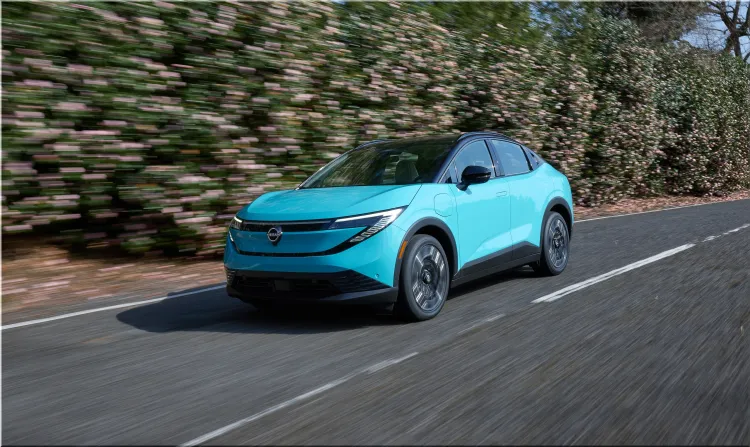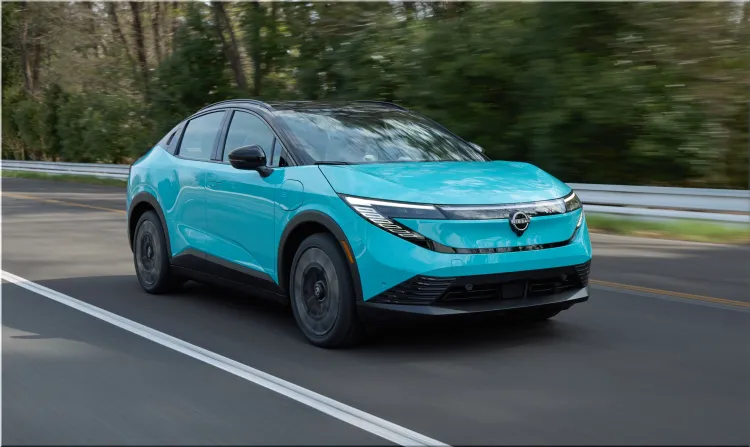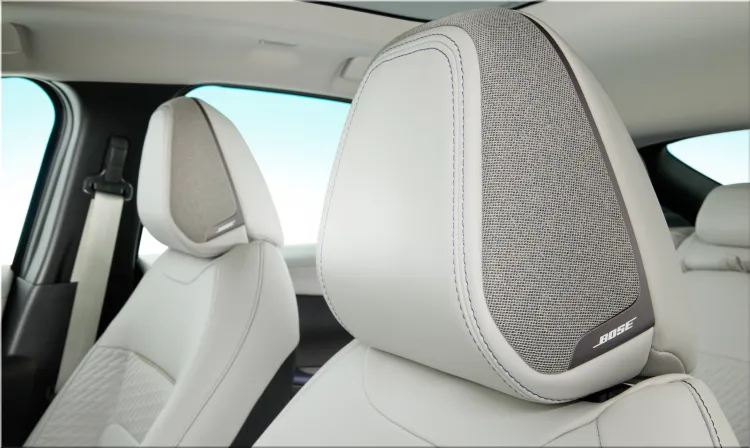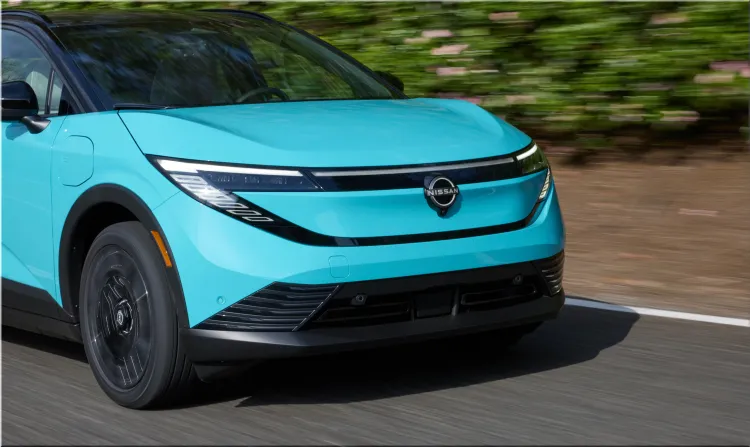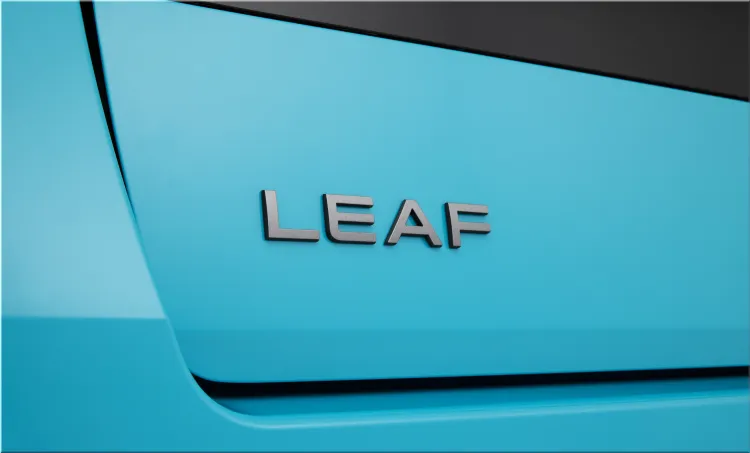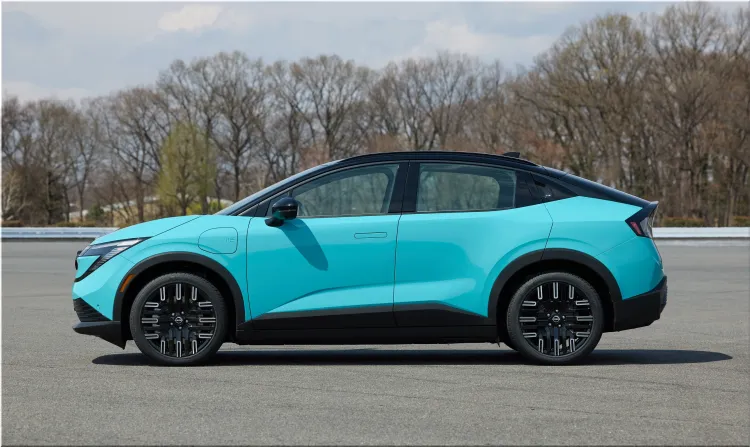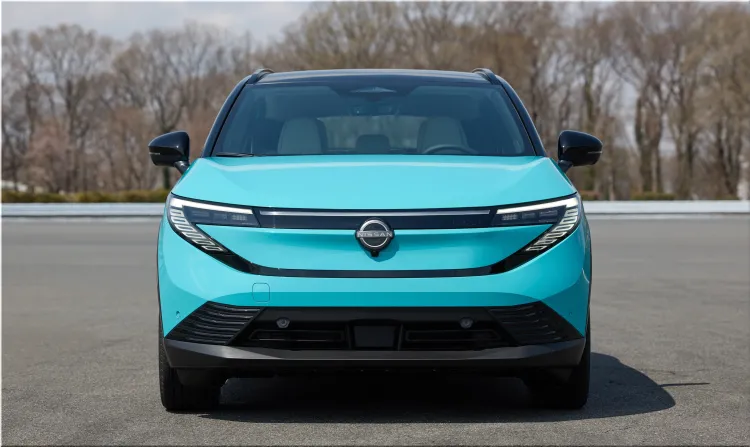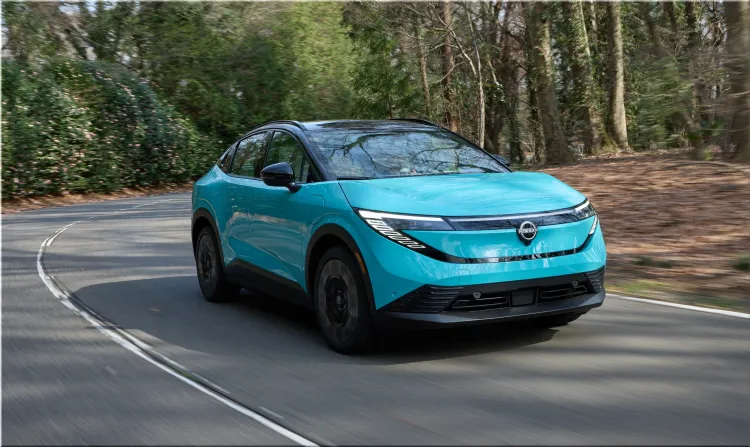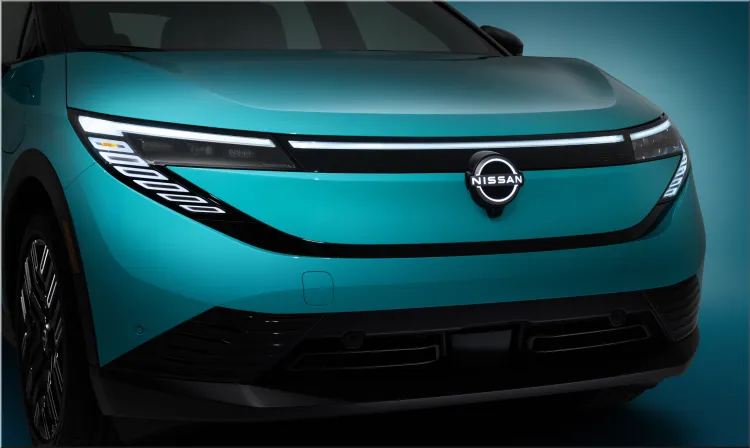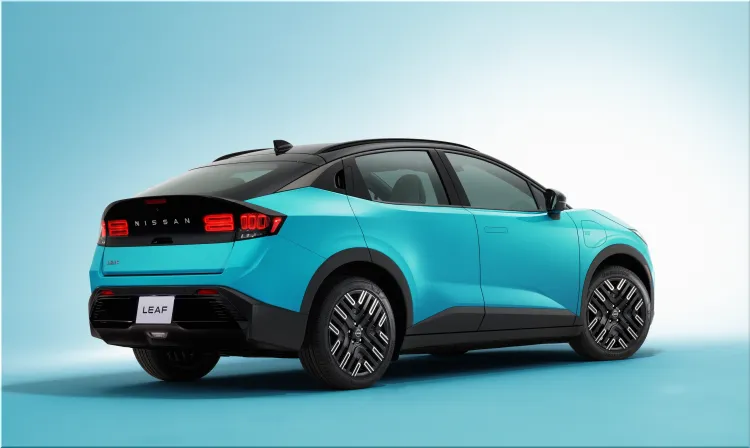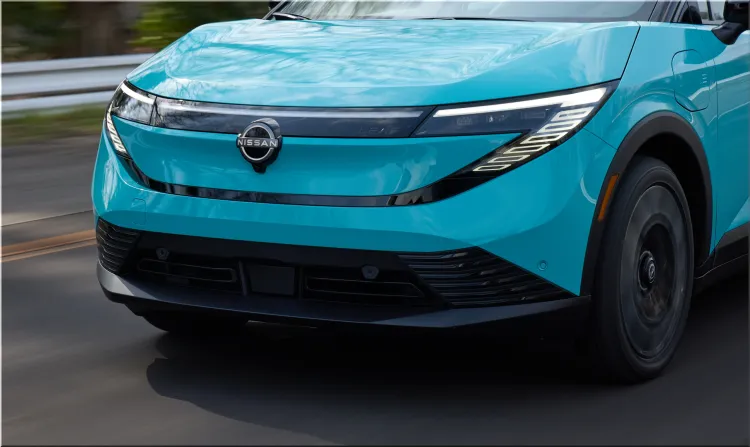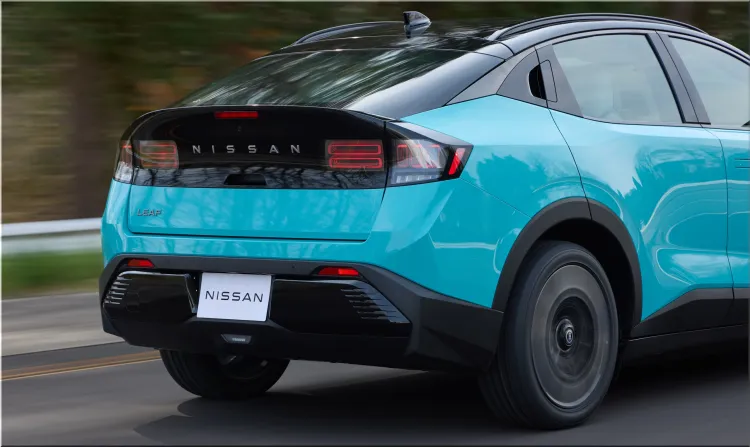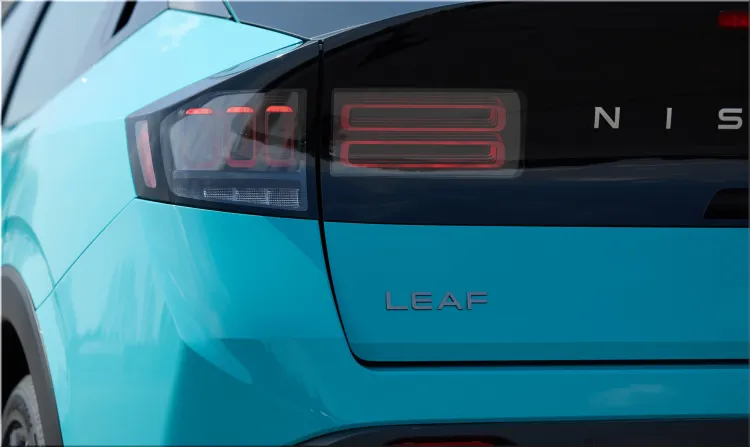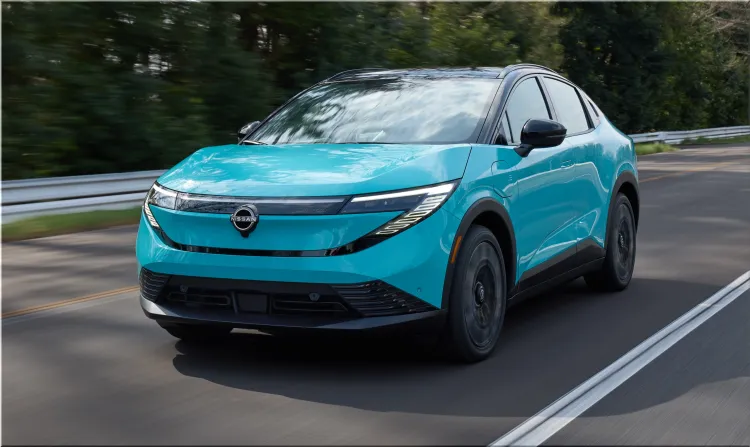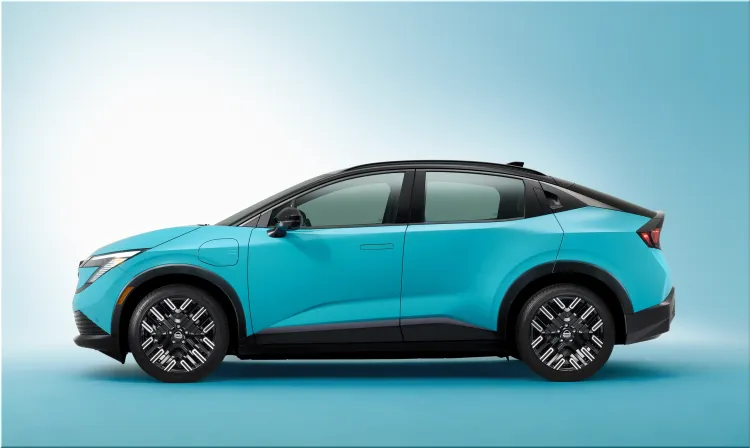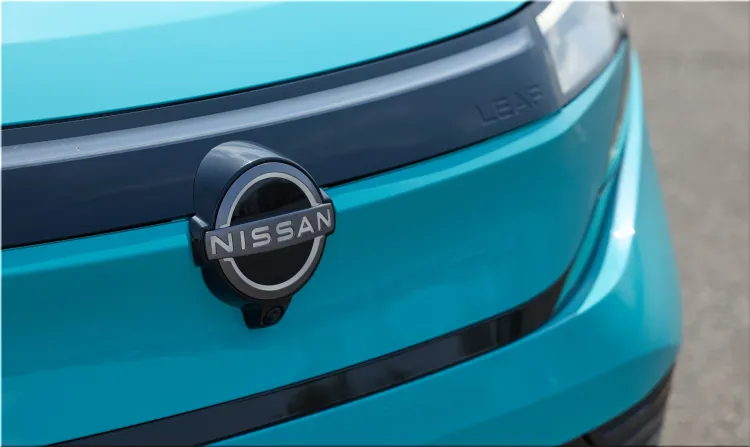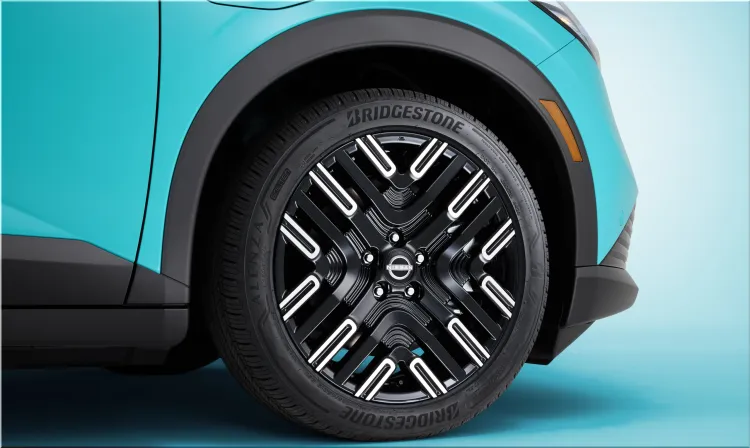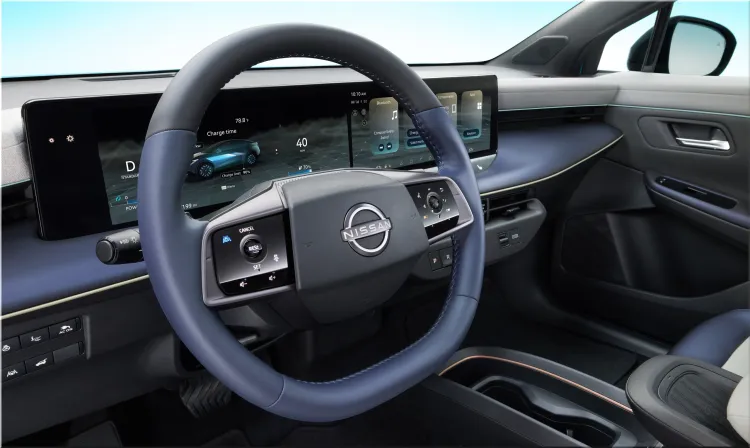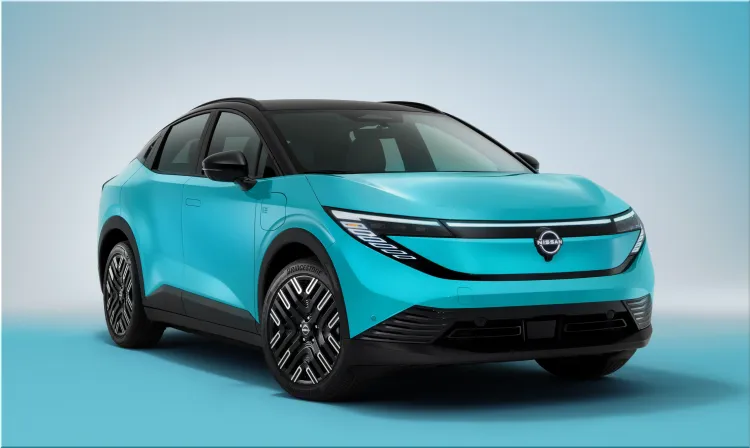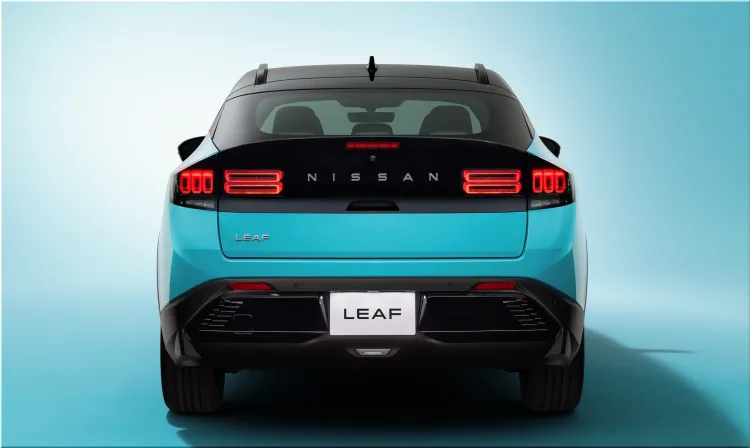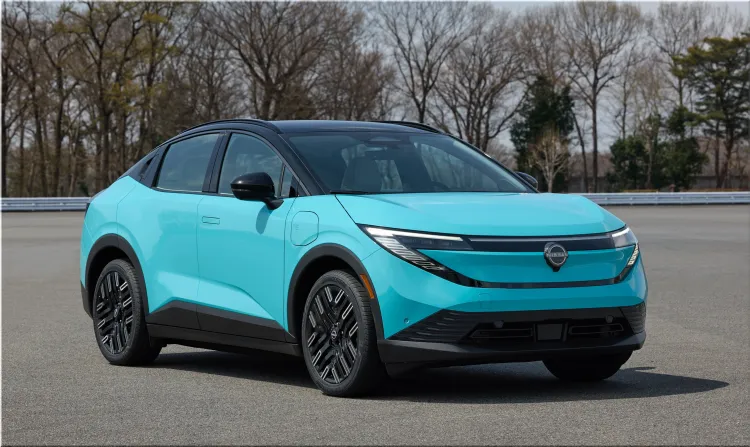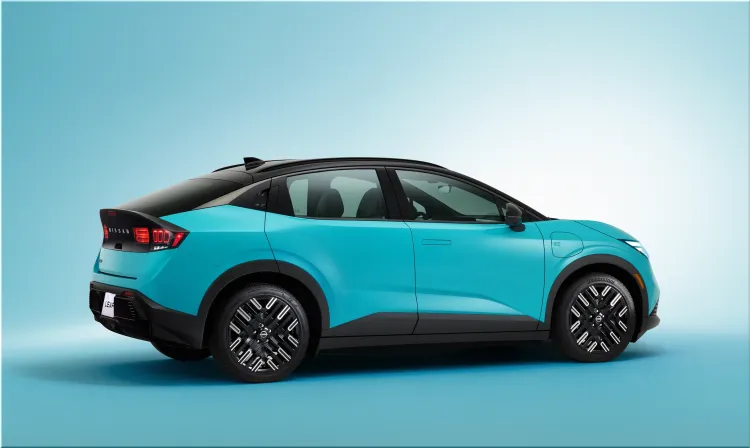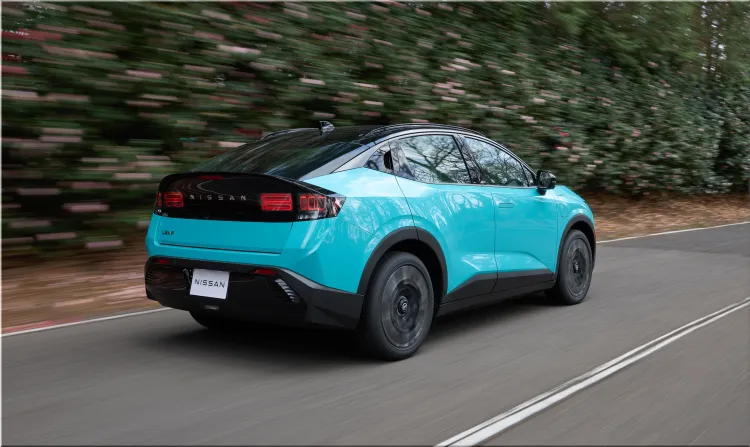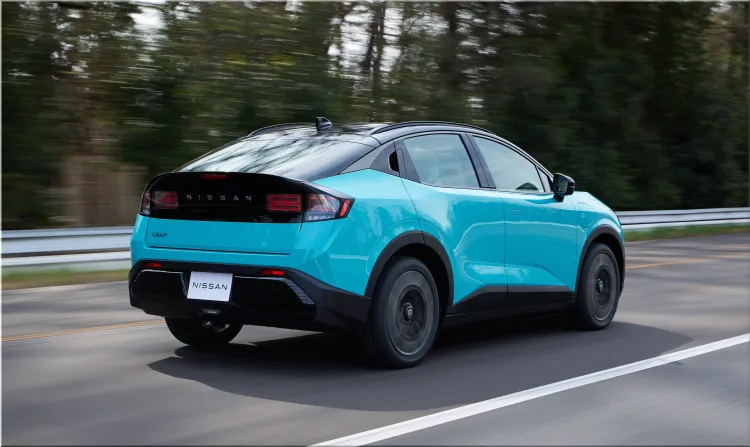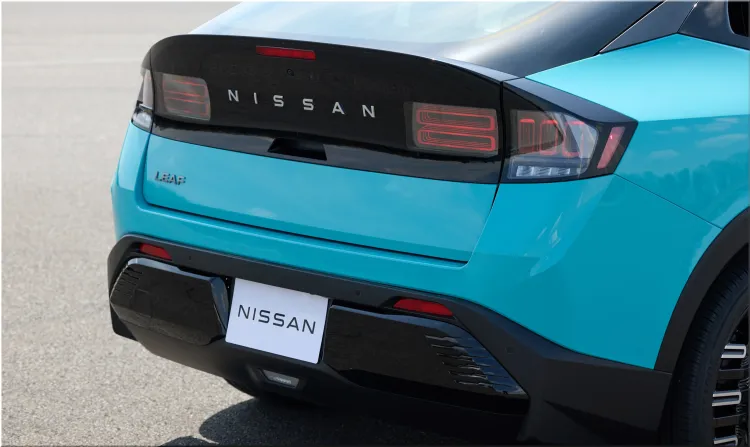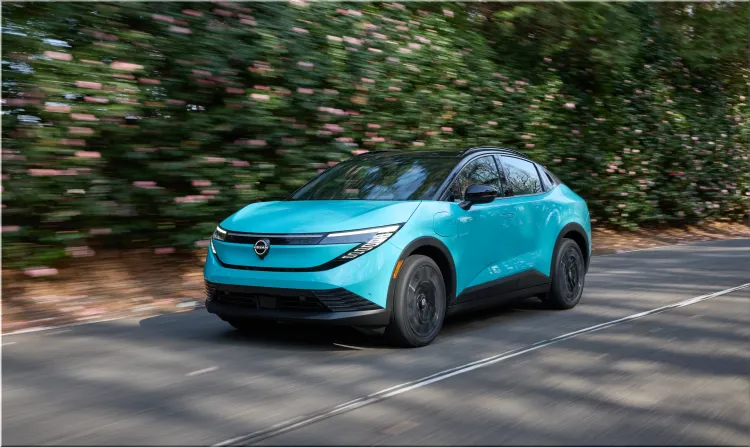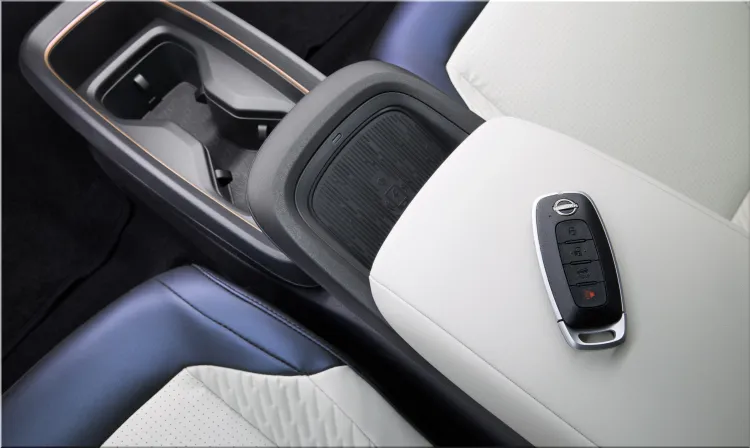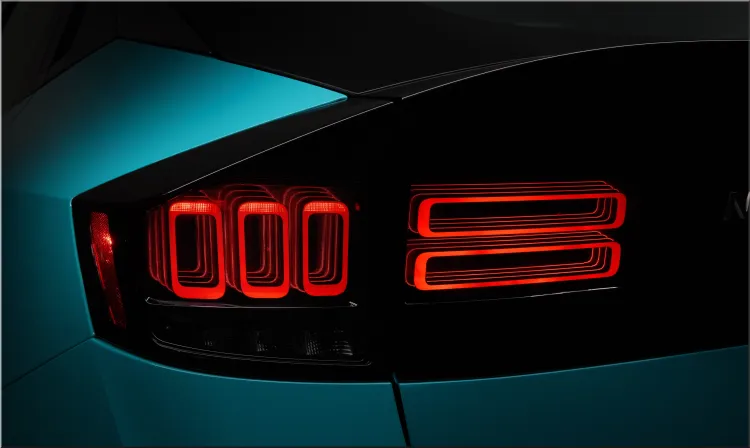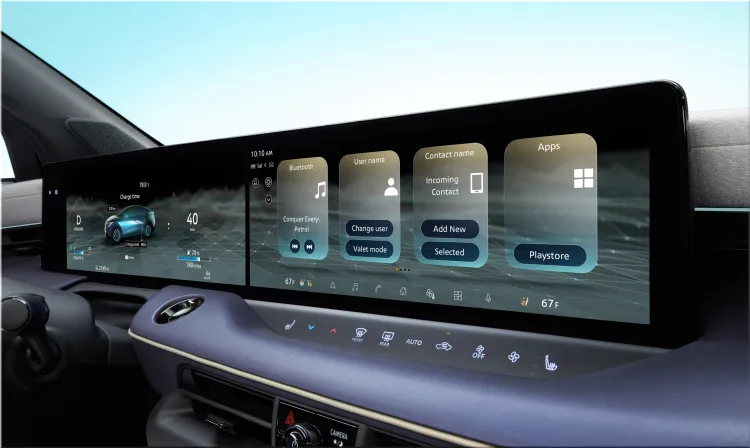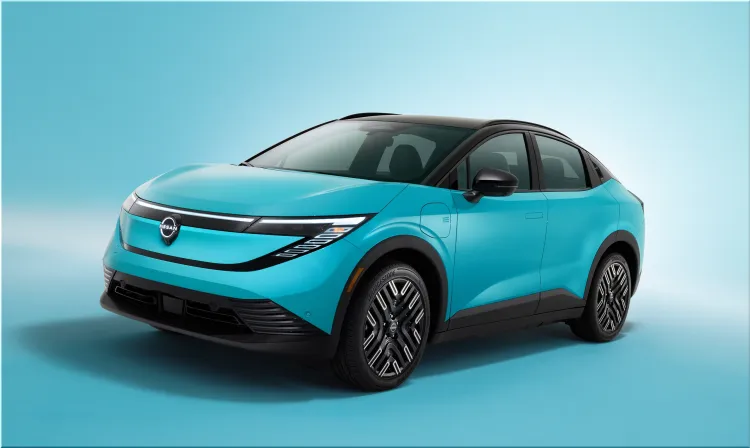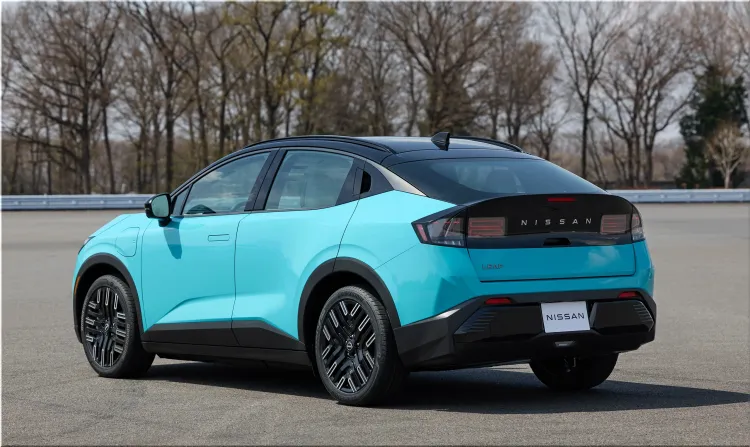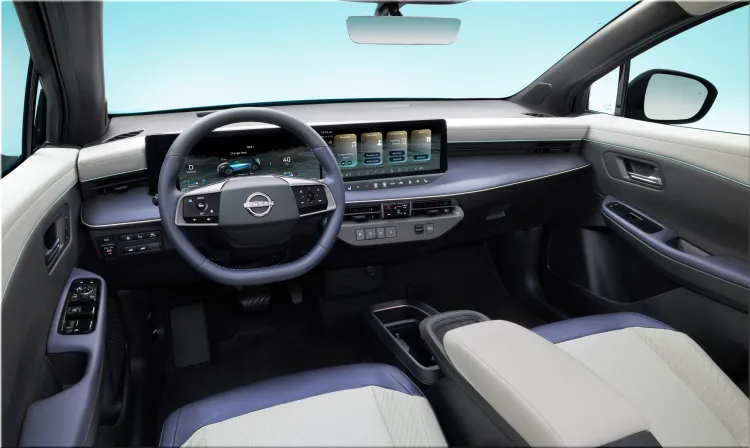The 2026 Nissan Leaf is no longer a compact hatchback. It’s now a family-friendly electric crossover built for broader appeal. Nissan redesigned the Leaf with sharper aerodynamics, a sleeker SUV profile, and added tech aimed at simplifying EV ownership in the U.S.
The third-generation model offers up to 303 miles of estimated range, uses the North American Charging Standard (NACS), and introduces a 3-in-1 powertrain setup that reduces space and improves efficiency. This Nissan Leaf is still about value, but now with more range, faster charging, and improved design.
Key Highlights: 2026 Nissan Leaf (U.S. Model)
| Feature | Details |
|---|---|
| Maximum Range | Up to 303 miles (estimated) |
| Battery Options | Liquid-cooled packs, up to 75-kWh usable capacity |
| Charging Standard | NACS with Plug & Charge |
| Infotainment | Dual 14.3-inch displays, Google built-in, wireless Apple CarPlay & Android Auto |
| Drive Feel | More responsive and smooth thanks to a compact 3-in-1 powertrain |
| Availability | U.S. dealerships: Fall 2025 |
| Production Location | Tochigi, Japan (shared with Nissan Ariya) |
Range and Charging: More Than Just Better Specs
The 75-kWh battery enables a 303-mile range on select trims, a big improvement over the outgoing model’s maximum of 212 miles. That closes the gap between Nissan and newer EV rivals, including Hyundai and Tesla.
Key range and charging enhancements:
- Liquid-cooled batteries increase thermal management and battery longevity.
- NACS support allows Leaf drivers to access the growing Tesla Supercharger network.
- Plug & Charge streamlines the payment and authentication process during public charging.
These changes remove some of the biggest objections mainstream buyers have with EVs—range anxiety and charging hassle.
Interior Tech: Built to Compete
The dashboard now supports dual 14.3-inch screens. The infotainment system includes Google built-in, allowing users to access native Google Maps, Assistant, and Play Store. Drivers also get wireless Apple CarPlay and Android Auto.
Interior technology features:
- 64-color ambient lighting (available)
- Bose Personal Plus audio system (optional)
- Google integration for apps and navigation
- 3D Intelligent Around View Monitor, Invisible Hood View, and Front Wide View
This places the Leaf in line with modern EV competitors, many of which are trending toward built-in ecosystems and cleaner cabin design.
Exterior Changes: Crossover DNA, Cleaner Lines
The 2026 Leaf shifts from a compact hatchback to a more crossover-inspired shape. Expect a roomier cabin with better aerodynamics. The design team added flush door handles, 3D holographic tail lamps, and optional 19-inch wheels to sharpen the look.
Key design upgrades:
- Sleeker silhouette with improved drag coefficient
- Dimming panoramic roof with heat shielding (available)
- Stronger SUV cues to broaden buyer appeal
- Improved ride height and stance
These tweaks serve both aesthetic and aerodynamic goals—supporting improved range without bloating the vehicle’s dimensions.
Driving Experience: Compact Powertrain, Confident Feel
A major upgrade comes from the new 3-in-1 powertrain unit. By integrating the motor, inverter, and reducer, Nissan cuts space requirements while improving power delivery and vehicle response. The layout reduces weight and complexity.
Expected improvements:
- Quicker throttle response
- Smoother regenerative braking
- Better weight distribution
Combined with the stiffer chassis and liquid-cooled battery system, the driving feel should improve, especially in urban environments.
Safety and Driver Assistance: Familiar, Upgraded Systems
The 2026 Leaf includes Nissan’s latest safety tech. Available systems include:
- ProPILOT Assist 2.0 (expected in upper trims)
- 3D Intelligent Around View Monitor
- Invisible Hood View for safer low-speed navigation
- Emergency braking and lane-keeping assist
Nissan hasn’t detailed every trim level, but expect a full ADAS (Advanced Driver Assistance Systems) suite in most models to remain competitive.
Who This EV Targets in 2026
Nissan aims to position the Leaf as an entry-level crossover EV that appeals to a broader mass-market audience, including those currently driving gas-powered vehicles. With nearly 700,000 global Leaf sales since 2010, Nissan knows this buyer.
Target buyers:
- Gas vehicle owners ready for a first EV
- Families needing more range and space
- Urban drivers looking for affordable, zero-emissions vehicles
The Leaf’s blend of improved range, tech, and charging access aims to make the transition to electric easier for first-time EV owners.
Trim Levels and Pricing Strategy (Expected)
Nissan has not released U.S. pricing. However, based on its value-first strategy and the vehicle’s features, the starting price is expected to remain competitive.
Estimated pricing (USD, based on segment rivals and current Nissan strategy):
| Trim | Est. Starting Price |
|---|---|
| Nissan Leaf S | $36,000 |
| Nissan Leaf SV | $39,000 |
| Nissan Leaf SL | $42,000 |
Expect Nissan to undercut Tesla’s Model Y and Hyundai’s Ioniq 5 while offering more features than similarly priced models like the Chevy Equinox EV.
Production and Availability
Nissan will build the 2026 Leaf at its Tochigi plant in Japan, alongside the Ariya. The U.S. will be among the first to get the new model, arriving in Fall 2025.
Other global markets will follow in 2026. This decision prioritizes Nissan’s largest Leaf customer base: American drivers.
Competitive Outlook: Where Leaf Stands in 2026
With the third-generation model, the Leaf reenters the EV crossover segment at a better time.
2026 U.S. EV landscape snapshot:
- Tesla Model Y: Still leads in sales but suffers from rising prices.
- Chevrolet Equinox EV: Price-competitive, but lower range.
- Hyundai Ioniq 5 / Kia EV6: Strong rivals with better interior space but higher price tags.
- Ford Mustang Mach-E: Strong performance, less interior space, and mixed charging reputation.
Where Leaf leads:
- Value for range
- Access to NACS charging
- New tech integrations
- Long-term brand familiarity
Nissan bets the Leaf’s combination of real-world range, pricing, and updated features will attract practical buyers not chasing the luxury badge.
Final Take: A Smarter, Simpler Electric Crossover
The 2026 Nissan Leaf targets first-time EV drivers who want more range, faster charging, and intuitive tech—without climbing into the $50K segment. Nissan cleaned up the exterior, trimmed the dashboard tech, and gave U.S. buyers access to Tesla’s charging network. The Leaf isn’t trying to shock the market—it’s trying to win it back.
With its longer range, faster charging, and clean execution, the new Leaf could make a serious dent in the mainstream EV space.
The Nissan Leaf is one of the most popular electric vehicles (EVs) in the world, with over 10 million units sold since its launch in 2010. It is also one of the most affordable EVs, especially in the United States, where the 2024 Nissan… Continue reading
Is the 2025 Nissan LEAF the right electric vehicle (EV) for you? We'll break down everything you need to know to make an informed decision. Let's face it, gas prices are on a one-way trip to "ouch territory." For many drivers, electric… Continue reading
The 2026 Nissan Micra EV returns as a fully electric compact hatchback. Designed on the AmpR Small platform, it combines zero-emission power with practical city-focused features. Two battery sizes offer flexible range and… Continue reading
The new Nissan LEAF came as a tsunami on the European electric cars market . The Japanese manufacturer announces that it has already received 19000 orders for Nissan LEAF on the "old continent", 13000 of them were placed before the car… Continue reading

